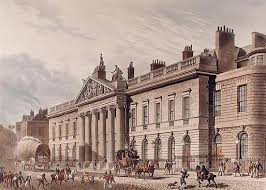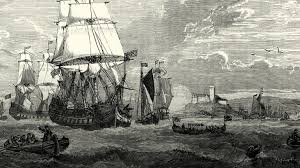British east company in india
On 31 December 1600, Queen Elizabeth I of Britain granted permission to an british east india company to trade with the East for 15 years. The initial name of this company was The Governor and Company of Marchants of Landon Trading into the East Indies. In 1688, another company, the New Company, emerged, in 1702 AD, the two companies decided to join together and merged in 1708 when it was named The Governor and Company of Marchants of Landon Trading into the East Indies. It was named East India Company by the Charter Act of 1833.
East India Company History
british east company in india
After the establishment of the East India Company in 1601, he made his first campaigns in the countries of South-East Asia. In 1608, James-I first sent Hawkins to India by sending a letter in the name of Akbar as ambassador but he reached the court of Mughal Emperor Jahangir. He could speak both Turkish and Persian languages. He also spoke in Persian. Jahangir was happy and granted him the mansab of 400 and in 1608 AD, he was allowed to open a factory in Surat but due to Portuguese pressure, this permission was soon canceled.

French East India Company
Thus Hawkins did not succeed in obtaining a princely state. Now the British turned to South India and opened a trading house in 1611 AD at Masuli Pattam. The Portuguese were defeated by the British in the Battle of Swalli on the coast of Gujarat in 1611, when they were allowed to open a factory in Surat in 1612 AD, which was their fortified factory in 1612 AD. Also established factories in
- 1608 – Surat-First Factory
- 1611 – Masuli Pattam-first factory in South India
- 1612 – Surat first fortification factory.
Factories on the east coast in the south india
1611 Masuli Pattam (Machilipatam) was the famous port of Golconda state. From here, the British used to send clothes to countries like Persia.
1632 Golden Farman: –
By this decree the Sultan of Golconda In 1632, the English obtained a trade exemption in place of 500 pagodas annual tax. This was called the Golden Farmer.
1639: – An British Franciscan hired an area from the Raja of Chandragiri where a fortified factory, Fortsant George, was established.
Factories on the north-east coast: 1633: –
Factories were established in Hariharpur and Bala Tire in Orissa.
1651: – Bridgman established a trading cell in Hooghly. Then in the same year trading cells were established in Patne and Qasim Bazar.
1658: – All the major factories of Bengal, Bihar, Orissa, and the Coromandal coast were placed under Fortscent George.
The principal items of British trade in Bengal were silk cloth, cotton cloth, saltpeter, and sugar.
1669: – This year, the governor of Surat, Augian (and head of Bombay) gave the famous statement, “Now is the time to manage our business with a sword in our hands”.
Bombay: – The island of Bombay was given to the British by the Portuguese in 1661 to commemorate the Portuguese princess Catherine’s marriage to the British Prince Charles, which in 1668 was granted by the Charles to the East-India Company at an annual rent of 10 pounds.
1687: – By this year, Bombay had become a prominent merchant colony of the British in place of Surat.
1688:- Bombay Chief Sarjan Child captured several Mughal ships on Bombay and the western coastline, but Aurangzeb was harshly repressed by them. In place of damages of one and a half lakh rupees, he was given a common pardon.

Development of British power in Bengal
The Battle of Plassey was a major turning point in India’s history. This paved the way for the establishment of British rule in Bengal and eventually in the rest of India. It transformed a trading company into a political power.
- 1651: Suja, the Subedar of Bengal, through a decree gave the British an exemption to trade with Bengal instead of an annual tax of 3000. This was done because an British doctor, Gregian Branton, treated a woman from the Raj family.
- 1651: Suja, the Subedar of Bengal, through a decree gave the British an exemption to trade with Bengal instead of an annual tax of 3000. This was done because an British doctor, Gregian Branton, treated a woman from the Raj family.
- 1656: – The above trade discount was reaffirmed.
- 1672: – Saista Khan reaffirmed the waiver.
- 1680: – Aurangzeb issued a decree ordering the British to collect 2% octroi and 1.5% jizya tax.
- 1688: – The British looted Hooghly. Later, due to persuasion, he was allowed to trade again.
- 1690: In Sutanati, Jab Charnock founded British Kothi, where it later laid the foundation of Calcutta, the future capital of the British. For this reason, Charnock is considered the father of Calcutta.
- 1688: – Azimushan, the Subedar of Bengal, provided the zamindari of three villages – Sutanati, Kalikata, and Govindpur to the British, where it was the foundation of Fort William. Sir Charles Iyer became the first governor of Fort William. From 1774 AD to 1911 AD, Fort William or Calcutta remained the capital of the British era.
- Naresh Mission (1698): – This mission went to the court of Aurangzeb to obtain a business principality. But it failed to achieve this.
- John Sharman Mission (1715): – A mission from Calcutta, headed by John Sarman, arrived in the court of Farrukhsiyar in 1715.
- Hamilton: – A physician who treated Farrukhsiyar’s disease.
- Khwaja Sahurd: – It also included an Armenian dialect. Farrukhsiyar was pleased to issue a royal decree in 1717 which allowed the company to trade with Bengal in exchange for an annual tax of Rs 3000 and allowed the coins minted by the company in Bombay to run throughout the Mughal state.
British historian Orm (Arm) called it the company’s Magna Carta.
Danish or Dutch East India Company
The Danes came to India in 1616 after the British. He established the first factory in 1620 at Tranke Bore, Tanjore. Their second factory was established in 1676 in Serampore, Bengal. In 1745, they sold their factories to the British and they left India.
The french east india company
The French East India Company was founded by its famous Prime Minister Colbert during the time of the French Emperor Louis Caiudhwan. Initially, it was called The Company Oriental.
questions answering for east india company
When did the British East India Company arrived in India?
The British East India Company came to India as spice merchants, a very important commodity in Europe and was then used to preserve meat. In addition, they mainly traded in silk, cotton, indigo dye, tea and opium. They landed in the Indian subcontinent at the port of Surat on 24 August 1608.
What India became of the British East India Company?
british Company rule in India effectively began in 1757 after the Battle of Plassey and lasted until 1858, when, following the Indian Rebellion of 1857, the Government of India Act 1858 led the British Crown to assume direct control of India as the new British Raj. did. .
Who founded the British East India Company and when?
In 1600, a group of English businessmen asked Elizabeth I for a royal charter that would allow them to travel to the East Indies on behalf of the crown in exchange for a monopoly on trade. Traders put in around £ 70,000 of their own money to finance the venture, and the East India Company was born.
What is the East India Company now?
The East India Company, which once owned India in one of the great lords of history, is now owned by an Indian entrepreneur by Sanjay Mehta. The company was founded in 1600 for importing spices, tea and foreign goods from Europe, India. For years the company remained steeped in memories and history books.
